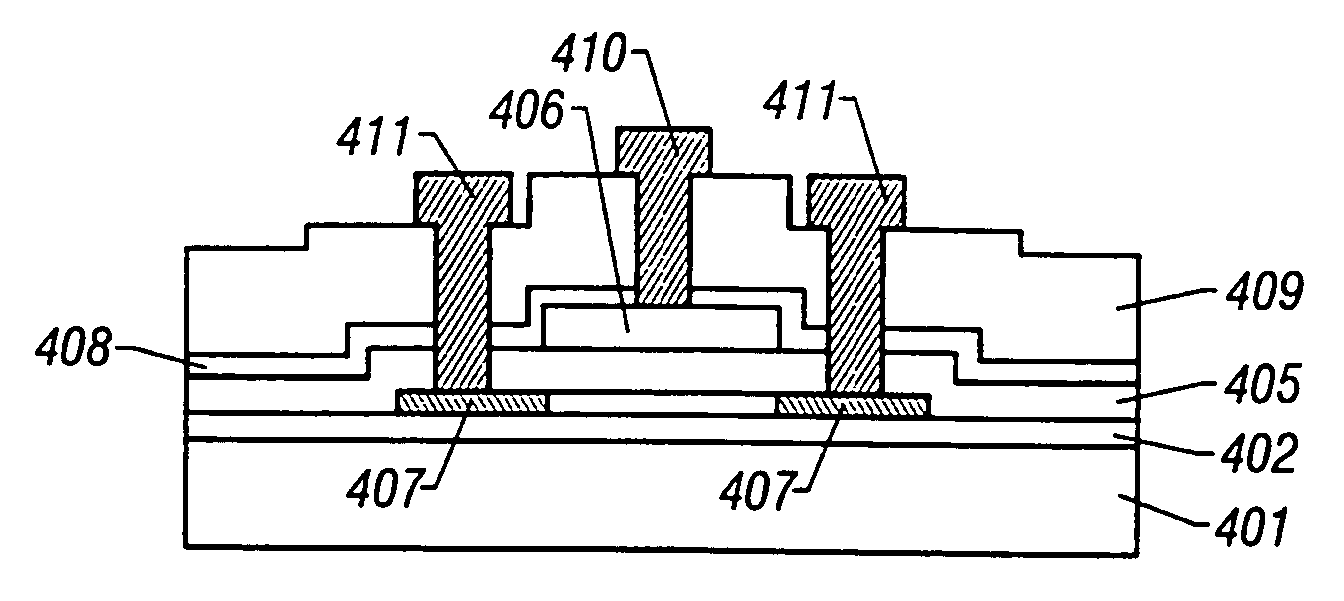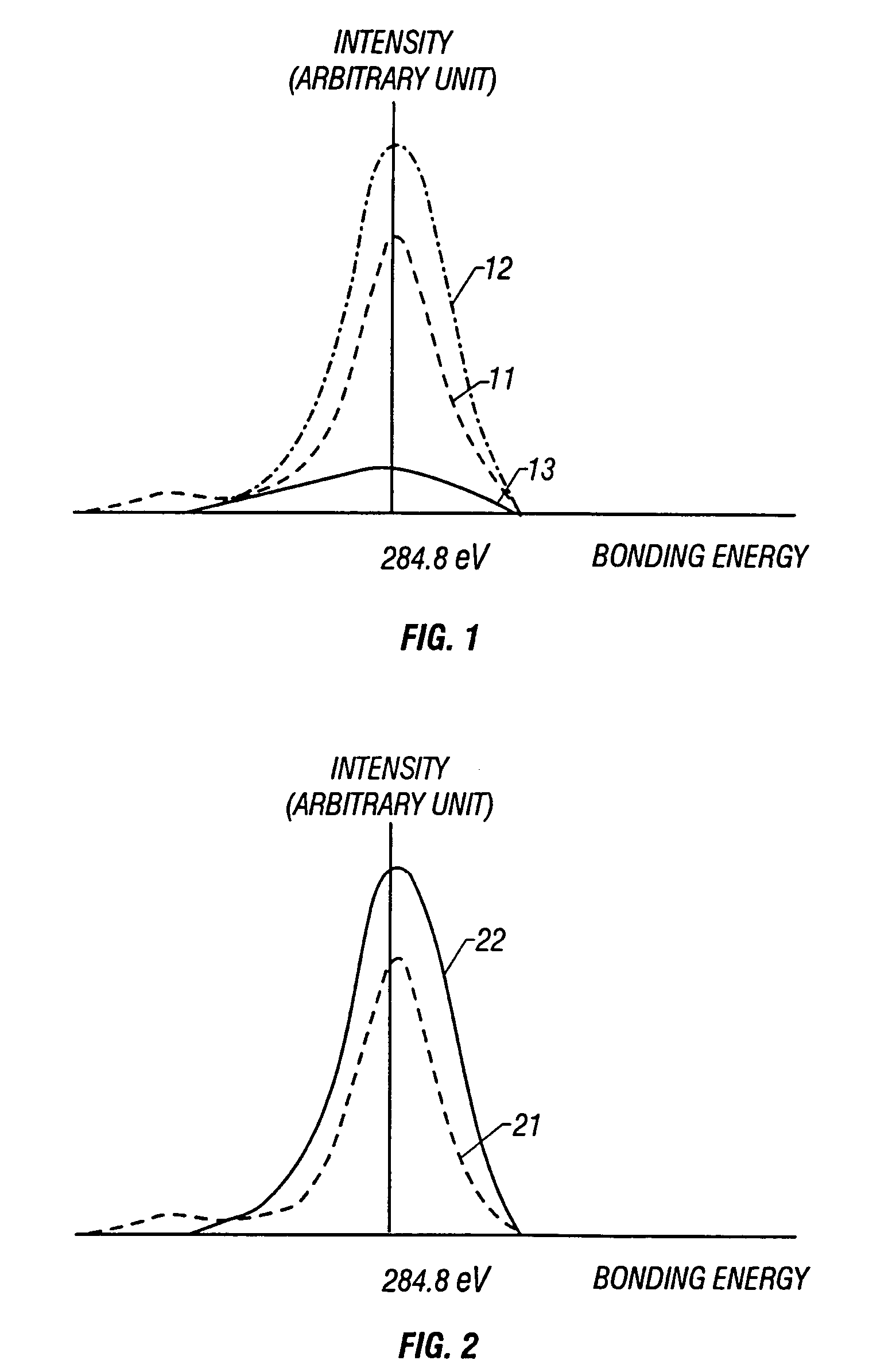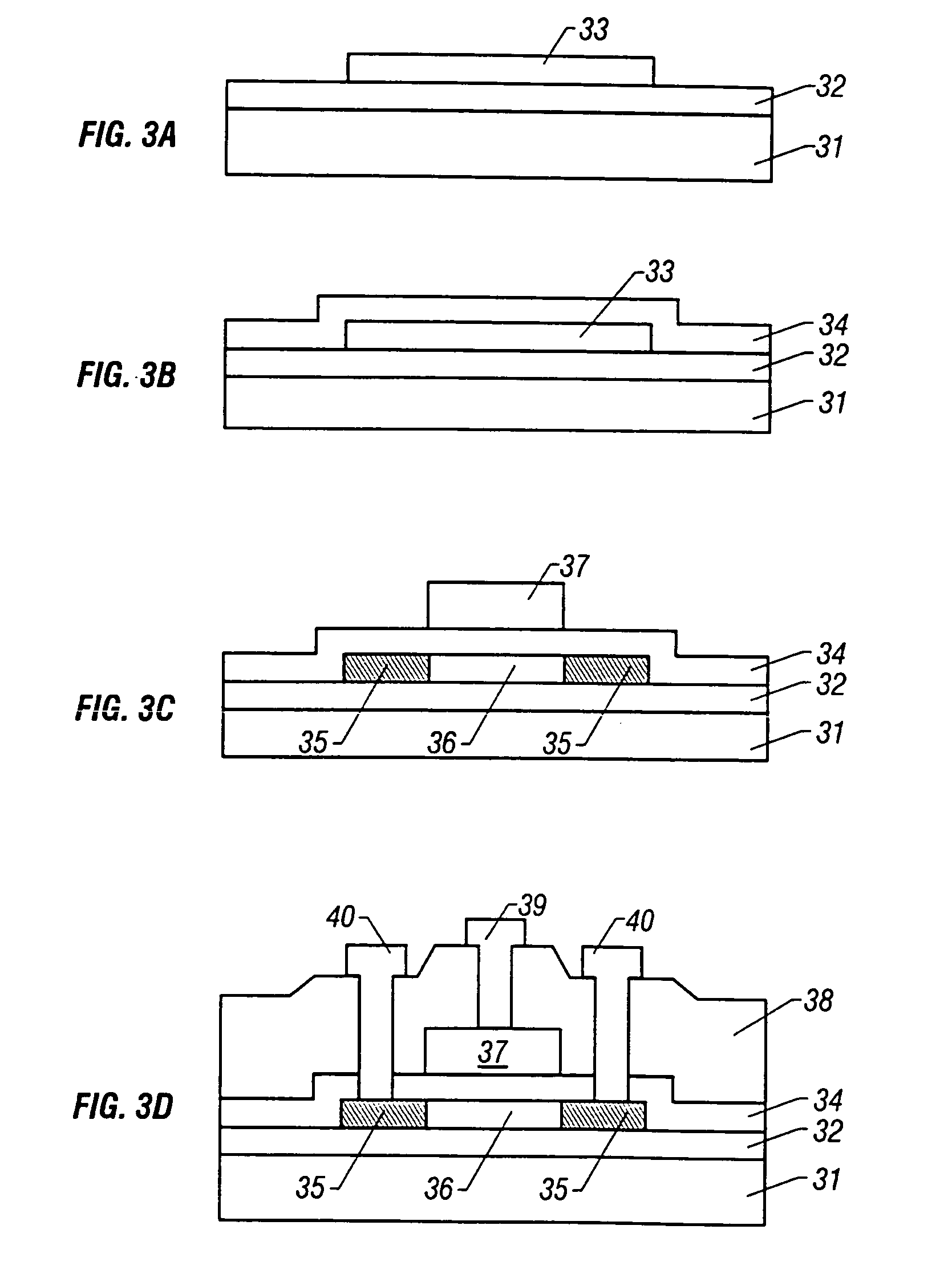Method of manufacturing a semiconductor device
a manufacturing method and semiconductor technology, applied in the direction of gas-filled discharge tubes, solid cathodes, radio-controlled devices, etc., can solve the problem of inability to increase the process margin, and achieve the effect of improving the decarbonization and step coverage property, reducing the dielectric constant, and improving the capacity of the interlayer insulating film
- Summary
- Abstract
- Description
- Claims
- Application Information
AI Technical Summary
Benefits of technology
Problems solved by technology
Method used
Image
Examples
first embodiment
[0056]FIGS. 3A to 3D are cross-sectional views showing a process of forming a transistor in accordance with an embodiment of the present invention.
[0057]In this embodiment, the present invention is applied to a case in which a thin-film transistor is formed on a glass substrate.
[0058]On a glass substrate 31, SiO2 having a thickness of 2000 Å is used as an under film 32 through the atmospheric CVD method. Thereafter, an amorphous Si film having a thickness of 500 Å is formed as an active layer through the plasma CVD method; a resist is patterned through a known photolithography method to form a mask; the amorphous Si film is etched using CF4+O2 by dry etching; thereafter the resist is separated using an alkali separation agent to form an island 33. Then, the island 33 is allowed to grow in a solid-phase at 600° C. for 24 hours so as to change from amorphous Si to polysilicon. This is shown in FIG. 3A.
[0059]After the resist has been separated by the separation agent, the carbon contam...
second embodiment
[0089]A memory in a non-volatile semiconductor storage unit is comprised of a large number of memory transistors each of which forms one basic memory transistor. The present invention is applied to the manufacture of the memory transistor. FIG. 5 is a cross-sectional view showing a basic cross-sectional structure of a memory transistor. The memory transistor is formed on a substrate 51 through the known silicon heat oxidation technique, the CVD method, the patterning of resist by the photolithography technique, and the etching technique. The memory transistor includes a polysilicon two-layer gate consisting of a tunnel oxidation film 52, a floating gate 53 made of polysilicon, an interlayer insulating film 54, and a control gate 55 made of polysilicon, a source diffusion layer 57 formed by the implantation of phosphorus or boron ions, and a drain diffusion layer 56.
[0090]The floating gate 53 is a gate for changing a threshold value of a memory transistor with respect to the control ...
third embodiment
[0105]An example in which the present invention is applied to a thin-film transistor (also called “TFT”)made of polysilicon is shown in FIG. 6. A process of forming an under film 302 on a glass substrate 301 is shown in FIG. 6A. The glass substrate 301 is made of material high in light transmission property with respect to a visual light, such as boro-silicate glass or quartz. In this embodiment, there is used Corning 7059 made by Corning Corp. In forming the under film 302, when a gate voltage is increased in an on-state direction after TFT is completed using the present invention in forming the under film 302, (for example, if the channel is of the n-channel type, the carriers flowing in the channel is electrons, and if the channel is of the p-channel type, the carriers flowing in the channel are holes.) There is a case in which a reverse-type channel occurs on the substrate 301 side below the channel.
[0106]The drain current is in principle saturated under ON state of a channel ev...
PUM
 Login to View More
Login to View More Abstract
Description
Claims
Application Information
 Login to View More
Login to View More - R&D
- Intellectual Property
- Life Sciences
- Materials
- Tech Scout
- Unparalleled Data Quality
- Higher Quality Content
- 60% Fewer Hallucinations
Browse by: Latest US Patents, China's latest patents, Technical Efficacy Thesaurus, Application Domain, Technology Topic, Popular Technical Reports.
© 2025 PatSnap. All rights reserved.Legal|Privacy policy|Modern Slavery Act Transparency Statement|Sitemap|About US| Contact US: help@patsnap.com



